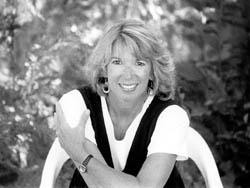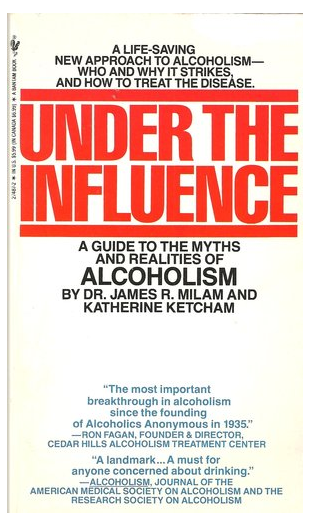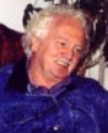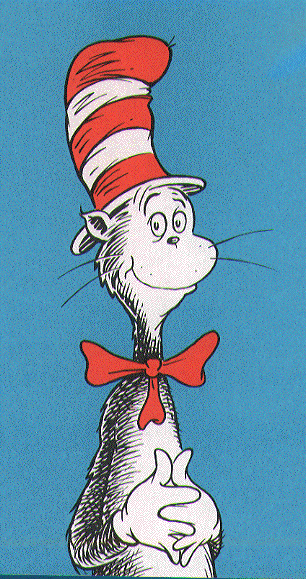Boomer Hot 2009
Katherine Ketcham

Katherine Ketcham, Best Selling Author New York Times, Writer, Columnist in Boomer Style Magazine, Straight Talk on Drugs and Alcohol. And, is Boomer Hot She is the epitome of boomer hot because of her sense of humor and for creating something bigger than herself, has saved many lives, and helped many families put the pieces back together.
Boomer Hot
Katherine Ketcham
Gets Our Vote
Nickname: Kathy
“I was just lucky, I was so lucky. I met Jim Milam, who was brilliant, who had a unique understanding of addiction and was way ahead of his time. We worked together and wrote a book that found its way into people’s hands and changed people’s lives. For me, the light bulb went on, and I became passionate about educating people about addiction.”
Happily Under the Influence of Katherine Ketcham
Dawn Bonner
And, she’s the epitome’ of Boomer Hot.
Ketcham said, “Well, I couldn’t believe it, I thought it was a joke [being Boomer Hot]. When I got the email I thought, oh this has to be a joke. I am 60-years-old, am in good shape, look younger than my age—at least my husband thinks I am hot. But, I was thrilled, it is a real honor. I love the fact that I am sandwiched between Johnny Depp and Julian Lennon. How can you get better than that? It is a real thrill…real honor and a lot of fun.”
Boomer Hots are Passionate
One of the prerequisites of being selected for the Boomer Hot List is to be engaged fully in life; people who are creating something bigger than themselves. With 14 books under Ketcham’s belt and more in the works, she definitely delivers the goods.
Ketcham said, “I love the work. I love to write and I get to write books that affect people’s lives. Although, I don’t get to hear too often from readers, I do know they are out there (people whose lives are better because of the books), and I hear often enough. There are parts of this work that are difficult; I think the isolation of being a writer is something I love, but it is also incredibly difficult at times.”
She said, “I got into the whole world of addiction so that I could write an article about it and then I couldn’t stop myself, I just kept writing and writing and writing.”
Katherine Ketcham wrote one article on addiction and from there, she was hooked. It became her passing and she just had to keep writing and writing about it.
 Groundbreaking BookUnder the Influence
Groundbreaking BookUnder the Influence
Ketcham’s first book, Under the Influence: A Guide to the Myths and Realities of Alcoholism was written in partnership with James Milam. Under the Influence is a groundbreaking book which brought to light how the alcoholics body and brain function differently than the non-alcoholic or the person who can tolerate alcohol.
The book is backed with scientific evidence to support the facts presented. Ketcham was able to take very technical information and break it down into layman’s terms, so everyone can understand the physical process of addiction.
This book is fascinating and takes the shame of being an addict away because finally it is very clear understand this is a disease. Now, anyone can understand what happens when you or one you love falls under under the influence of addiction. You will learn what it looks like, what happens, how to get out of the death trap of addiction, and how to live a joyous life clean and sober.
Retired substance abuse counselor Patricia Stephens said, “I can’t say enough about the book. It was the one book that made sense about addiction. I read it over and over. I was like a sponge, I soaked everything up. I am into manic depression and sobriety and it seems this book really adds to the quality of sobriety for the manic depressive.”
Stephens celebrated her thirty-sixth year of sobriety in May 2011.
Who is Katherine Ketcham and Where did She Come From?
She is interesting and fun to share a conversation with. Ketcham has a quick wit, delightful sense of humor, and a heart as big as Texas.
Ketcham said, “Well, I was a psychology major at the University of Rochester and after I graduated I became a freelance writer. I was trying to establish myself in the writing field and as a photographer, and I got hooked on addiction and trying to right the injustices that I felt were hurting addicted people and their family members.”
“I got hooked because I wanted to debunk the myths I saw that were being perpetuated from ignorance and misconception—age-old myths, such as, the addict lacks will power.”
“Now, I would like to challenge anybody to talk to a person in recovery about willpower! I have seen people recover from this disease and that process requires more willpower and strength than I have ever been asked to summon. When addiction enters the picture, it stays in control because this is a brain disease; it affects the brain in deep and profound ways.”
“We are not used to a disease like this—we are used to heart disease, diabetes, cancer…but the brain such a complicated organ, affecting the way we think, our impulse control, controlling our ability to reason, to empathize, to see the consequences of our behavior. Addiction alters our ability to put ourselves in other people shoes, think, act, behave, and interact with other human beings.”
“So, when we come under the influence of these chemicals, we become a whole different person because our brains are being soaked in these toxic substances. Addicted people go from wanting the drug to needing it. The need becomes critical, and that is a brain centered desire.”
“If we can understand addiction as a brain disease, we will get much closer to the ability to understand how profoundly a sick, toxic brain affects our behavior and we will stop talking about how addicted people lack character, lack willpower, and have all of these character defects,” said Ketcham.
![]() Ketcham Shares How the Life-Changing Book Got its Start
Ketcham Shares How the Life-Changing Book Got its Start
It’s interesting; I didn’t have any addiction in my family. I had an uncle who was reputed to be an alcoholic and he eventually did die of alcoholism. In my 20s I had a friend whose mother was a binge drinker and my friend would tell me stories about her mother. I knew her mother as the most beautiful, elegant person, and I just couldn’t put the pieces together.
 Then in the mid-1970s I was a part-time secretary to the editor of The Seattle Post-Intelligencer newspaper. Bill used to come into my office on slow news days and tell me stories about being a drunk. Once again, I couldn’t put it together; I couldn’t figure it out how or why these creative, intelligent, compassionate people were transformed into people who ignored their family’s needs, were selfish, treated others badly—and then when they got into recovery, they became good people again. It didn’t make sense to me—something had to happen, something physiological and beyond their control, that transformed them from good people into people who did bad things and then back again, once they made it into recovery, into good people. The recovery piece seemed like a miracle to me—a truly miraculous transformation.
Then in the mid-1970s I was a part-time secretary to the editor of The Seattle Post-Intelligencer newspaper. Bill used to come into my office on slow news days and tell me stories about being a drunk. Once again, I couldn’t put it together; I couldn’t figure it out how or why these creative, intelligent, compassionate people were transformed into people who ignored their family’s needs, were selfish, treated others badly—and then when they got into recovery, they became good people again. It didn’t make sense to me—something had to happen, something physiological and beyond their control, that transformed them from good people into people who did bad things and then back again, once they made it into recovery, into good people. The recovery piece seemed like a miracle to me—a truly miraculous transformation.
So, I started to look into the physiology of this, met with James R. Milam, Ph.D., and visited him at Alcenas Hospital (now Milam Recovery Center in Kirkland, Washington) where my friend the editor went to treatment. After listening to Milam speak and reading his book, The Emergent Comprehensive Concept of Alcoholism, Bill the editor said, “So Kathy, if you really want a project you should try to rewrite this story so people can understand him.”
I wrote a series of articles for a Seattle magazine and people from all over the world responded. That’s when addiction truly became my passion; I just immersed myself in it. I asked Jim Milam if he would like to write a book with me, he said yes, somehow we were able to interest Dan Levant, publisher of Madrona Books in Seattle, he gave us a three thousand dollar advance, and now 30 years later we’ve sold well over a million copies.Under the ![]() Influence sells more copies than any of my other books. Even though the book is 30 years old, it is still valid. Everything in the book still applies today.
Influence sells more copies than any of my other books. Even though the book is 30 years old, it is still valid. Everything in the book still applies today.

Under the Influence: A Guide to the Myths and Realities of Alcoholims by James Milam and Katherine Ketcham
Ketcham said, “There are times I wish I didn’t have to keep working so hard. It seems like we should be at a different place in our society with addiction, but still there are so many people who don’t understand the facts. It doesn’t make sense to me and is frustrating to me, and because of the ignorance, people are dying and whole families are falling apart. That breaks my heart.”
“We have had medical research for years, we have all this scientific information about this disease—showing addiction is a chronic, progressive, inevitably fatal brain disease yet, we are still giving money to psychologists, psychiatrists, etc., to research why people drink and how to make them stop. Money is pushing the research agenda. I see researchers doing what I would call irresponsible research and government funding that makes absolutely no sense to me.”
“I’m afraid we still live in a world that doesn’t understand addiction. For example, the news media reports Robert Downey, Jr. drank because he didn’t get a challenging enough role!”
“I hear police officers give community talks about why people do drugs, and at the end, one of them says, ‘Well, if you just take a look at their families, you’d know why.’ So the families are constantly blamed.”
Ketcham continued, “The biggest problem I have seen in the 30 years I have been writing is the epidemic of adolescent drug use and addiction. Youth as young as eleven and twelve years old are getting addicted to alcohol and other drugs because they start using at an early age when their brains are still developing. Young people also tend to combine drugs, not just one or two but sometimes four, five, or six drugs at one time.
Ketcham Shares a Story
“I was worried about my son. I said, Ben I am worried about your marijuana use, will you go with me to the pediatrician and talk with her?”
“He agreed, he talked with her.”
She asked, “How often do you use?”
“He minimized of course, saying he used only once or twice a week.”
The pediatrician said, “If it is just marijuana and just once or twice a week, I wouldn’t worry about it.” Ketcham sighs.
“This physician said this in front of a parent who came to her for help because she was worried about her son’s use. This just makes me despair, because the people who need the help aren’t getting the help they need. Many medical people and mental health professionals are giving them the wrong information and perpetuating their disease,” said Ketcham.
|
What’s in Under the Influence? Amazon Product Descriptions |
|
Hollywood’s A&E biography on Downey, Jr. says he became an alcoholic when he didn’t get enough challenging roles. Guess that explains why he’s sober now, let’s hope those roles keep coming in, said with tongue in cheek. Often said of actors, ‘When his wife left, he couldn’t get over it…”
What Inspires Ketcham
 Ernie Hooker, CADC II, NCAC II has been an addiction specialist 35 plus years. He has referred countless people to read Ketcham’s books for many of those years.
Ernie Hooker, CADC II, NCAC II has been an addiction specialist 35 plus years. He has referred countless people to read Ketcham’s books for many of those years.
Hooker said, “During the eighties I worked in a hospital based chemical dependency program. We stocked recovery information including Under the Influence. Each patient received a copy of the book and we immediately noticed changes in our groups. Confrontation became less of a problem as the patients more readily accepted their problem with alcoholism and many of the families found an understandable description of alcoholism. The fact of the matter is, as a treatment coordinator, my job became easier.”
“There were other situations when the book was extremely helpful; for instance, an employee of the hospital stopped to see me about her alcoholism. She said treatment was out of the question as the HR department was not to be informed. She had been to a Marriage and Family Counselor (paying out of her pocket) and after several months decided it was not helpful. I had little to offer her that she was willing to accept. I gave her a copy of Under the Influence and didn’t hear from her for about six months.”
“The next time I saw her, she told me she had stayed sober after gaining a new understanding of addiction and though she had been to A.A. before it never helped her; now, she not only was attending A.A., but had a sponsor and was enjoying her participation. That was many years ago and she is still sober today. This situation, with some variation, happened several times,” said Hooker.
He continued, “The information on alcoholism and nutrition was very helpful, particularly, to patients in recovery who realized something was missing from their recovery and the nutritional information filled that gap.”
“In the later years we used Beyond the Influence with equal success. Beyond the Influence was especially helpful in training interns,” finished Hooker.
Stories such as Hooker’s is the juice which inspires Ketcham.
Ketcham said, “I think it is one word, miracles. I think little miracles happen all the time and my son is a miracle you are a miracle…when a life is taken from the abyss of addiction and despair and resorted to its full beauty, that is a miracle. I get to witness that, I get to see people find they are not alone anymore, I get to see this transformation with other people who are clean and sober.
I have a 92-year-old friend who has been sober for 43 years, so I feel like I am surrounded by little lights. So, there is nothing that would turn me away from this. I want to see more lights…more stars shine.
About Codependency, Children, and Addiction
Hooker asked Ketcham, “You have never written anything specifically on codependency. What are your thoughts on the whole family thing and codependency?”
Ketcham answered, “My son is actually in recovery. He is 29 months clean and sober; my husband is also clean and sober, he’s 26 years. I am not crazy about the word codependency because I think a lot of people, at least in my experience, within a parents support group I started, a lot of people are blaming themselves for the disease. We beat ourselves up. ‘What if I hadn’t done this?’ ‘What if I’d done that?’ It becomes a sick circle and the word codependency, in my opinion, perpetuates the idea that the family is, in part, at fault.”
“We are interdependent, not codependent. Our inter-dependency sets us up to believe we should protect the person who is addicted because we don’t want them to live with the consequences, because our society is so judgmental. It could affect his work, his chances to go to college, get a job, other parents don’t want my child to interact with your child.”
“It is less co-dependence and more that what we have to do is to remap and relearn, because this disease sets everything on its head. Part of our DNA as a parent is to protect our children. WE have to learn to allow them to suffer the consequences. I look at it as a relearning or remapping process; you didn’t cause it, can’t cure it, can’t control it…to learn distance in order to let them face the consequences,” said Ketcham.
“When my son was sick, I was able to separate the son I had raised from the son the addiction had created. I set my jaw, I said you are not going to win this because I knew my good, gentle, beautiful son was imprisoned by this brain disease and I was going to pull him out of this addiction come hell and high water. Here I was, I had already written seven or eight books on addiction and it took me by surprise. Once I was able to separate this addiction from the person and I could hate the disease not the person, I was in much better shape,” finished Ketcham.
Ketcham’s Opinion on Some of the Other Boomer Hots
 Barbie: “Well my daughter Allison loved Barbies and we have a whole case of them in the basement, but you know, I have a lot of our friends who weren’t going to allow their children to play with Barbie dolls, so I wasn’t going to.”
Barbie: “Well my daughter Allison loved Barbies and we have a whole case of them in the basement, but you know, I have a lot of our friends who weren’t going to allow their children to play with Barbie dolls, so I wasn’t going to.”
“A friend I really respected said why not? They are just a doll, they aren’t going to hurt them.”
“My daughter stands up for herself and nobody tells her what to do. So, Barbie didn’t have a negative effect on her. Personally, there have been times when I wished I had her [Barbie’s] big boobs and skinny waist, but I don’t. But, I like my body just as it is; she didn’t wreck my body image, so I don’t hold anything against her,”  said Ketcham with a chuckle.
said Ketcham with a chuckle.
The Cat in the Hat: I like the Cat in the Hat. I like anything to do with Dr. Seuss, absolutely. I like the rhymes and the message; I think every book he did has a message that is important. Whether it is about the environment or being different or kooky, using language in odd and wonderful ways. The one I loved was scrambled eggs and ham, there is something about the rhythm and lyricism and of the words. They are fun and slow and kind of gusty and sassy; he’s very sassy. I think he has a great sense of humor and I think humor is the key–to laugh. If we can’t laugh, you know what do we do? Do we cry all the time or frown all the time? We have to be able to laugh at ourselves.”
“I love AA’s Rule 64: Don’t take yourself so damn seriously and the funny thing is, there are no rules in AA, so the whole thing is just a good story. What a great lesson, don’t take yourself so damn serious. I fall prey to that, I often take life much too seriously. But it’s there to be captured, embraced, and make you laugh, cry, be happy, sad, everything. So, I love that, all of it,” Ketcham finished with a hearty, healthy laugh.
 Ketcham’s Present and Future Plans
Ketcham’s Present and Future Plans
Not one to leave her pen idle for too long and always thinking, Ketcham of course has many ideas of where to put her energies next. And, with her avid knowledge and passionate interest in addiction, she sees so many holes to be filled in assisting others in avoiding the pitfalls of active addiction. Which is another reason Ketcham is so very boomer hot. After all, the New York Times best selling author does have a way with words.
She said, “I’m working on several projects. I’d like to write a book for parents, with practical, clear, straightforward information and advice from other parents who have been through the experience of living with drug-using, drug-addicted children.”
“I’m working on a newspaper column about addiction and recovery, and I’m also deeply involved in my community work with Trilogy, a grassroots organization dedicated to providing recovery support services for youth and their family members. Basically, once a young person gets out of treatment, we have nothing to support them.”
“I think about my son and how crazed we were for so many years, before his addiction we were so happy and healthy, after his recovery we are so happy and healthy. Before addiction comes in you are healthy and happy, but addiction comes in and it destroys everything.”
“It’s a tough one, you know, dealing with the parents and the parent support group. Just seeing what parents go through, we have to relearn everything, every instinct we learned as parents. It’s a learning process and something we all need support for not just today, but tomorrow, and tomorrow, and tomorrow.”
“That’s what we are doing in our community. I have been working on setting up recovery support services for youth and families for eight years. A big part of what we have to do is education and to let people in the community know that addiction affects everyone–like my husband, who is a professor at the college where my son is graduating with a 3.8 GPA. Most kids don’t have access to resources, most parents don’t know where to send their kids to treatment, and most children don’t have support in their community to assist them in living sober together,” said Ketcham.
Ketcham’s husband has also been sober for many years. He read Under the Influence and sobered up after reading her book. He currently is a successful professor at the college his son almost flunked out of when his son was actively using. Ketcham’s endeavors put a face to the recovering alcoholics and addicts, thus giving hopes to teens, showing you really can live a happy, productive life free from the bondage of drugs and alcohol.
“Sadly, we have an epidemic of drug use in this country and precious few resources to help people maintain long-term recovery,” said Ketcham.
How You Can Make a Positive Difference in Someone’s Life
We do have a drug epidemic in this country, yet with the assistance of Ketcham, Milam, and the other books Ketcham has written, it doesn’t have to be that way. If we can gain a true understanding of what the addiction process is, independent of mental health professionals, Hollywood, psychiatrists or others who have not studied the human body and addiction, then we have a chance for to win the battle over addiction. Not only win the battle, but triumph over it in such a way that our children’s lives don’t have to be in shambles before we get it about addiction.
Love Grows (Where My Rosemary Goes [replace Rosemary with Ganja, Mary Jane, Margarita…]) by Edison Lighthouse epitomizes how the alcoholic or addict feels when they get high the first time. Life is wonderful, ecstatic, they’ve found the fountain of everything good and wonderful. They adore it.
Linger by The Cranberries is a good representation of how seductive drugs and/or alcohol are for the person afflicted with addiction…you are unable to resist it, yet there has already been many problems stemming from alcohol and/or drug use. Usually this in the middle stages of addiction–the poison still looks attractive, yet one begins to wonder, could I have a problem? What is this lingering feeling? I won’t drink/use so much…The honeymoon is over, but there is still enough of an appeal, you figure you can learn how to handle it instead of it handling you…So, the story goes and the saga continues for many.
Do yourself a favor and for those you love who are dealing with this insidious disease, grab Under the Influence or Beyond the Influence today, sit down and read it, then share it with everyone you know. This truly is one of the ways you can make a positive difference in someone’s life. God really blessed this world when He gave us Katherine Ketcham.
![]() Footnote: The votes are flooding in for Katherine Ketcham to be the Number 1 Boomer Hot Female after the voter has read this story–and, it is rapidly becoming the most shared story of Living Life…Boomer Style Magazine. Wonderful to see people caring enough to share this with their dear one.
Footnote: The votes are flooding in for Katherine Ketcham to be the Number 1 Boomer Hot Female after the voter has read this story–and, it is rapidly becoming the most shared story of Living Life…Boomer Style Magazine. Wonderful to see people caring enough to share this with their dear one.




Shahs of Sunset Guilty Pleasure | Boomer Style MagazineApril 28, 2015 at 9:33 am
[…] If you’d like to find out about the Boomer Hot author of Beyond Under the Influence, Katherine Ketcham, check it out by clicking […]